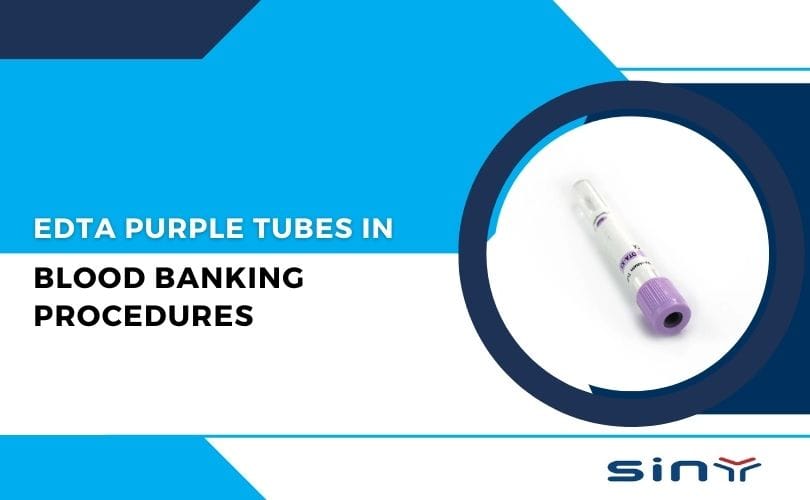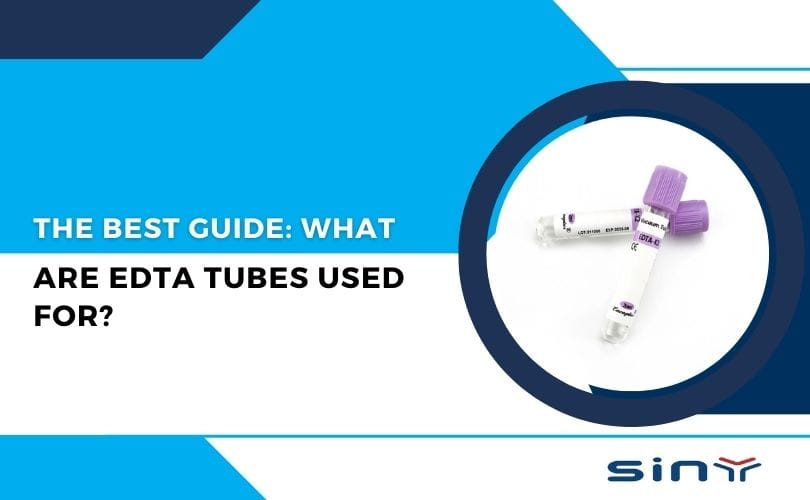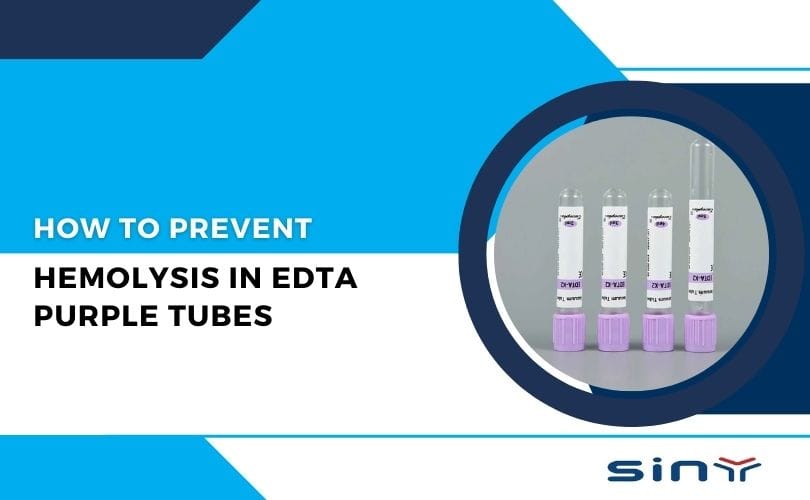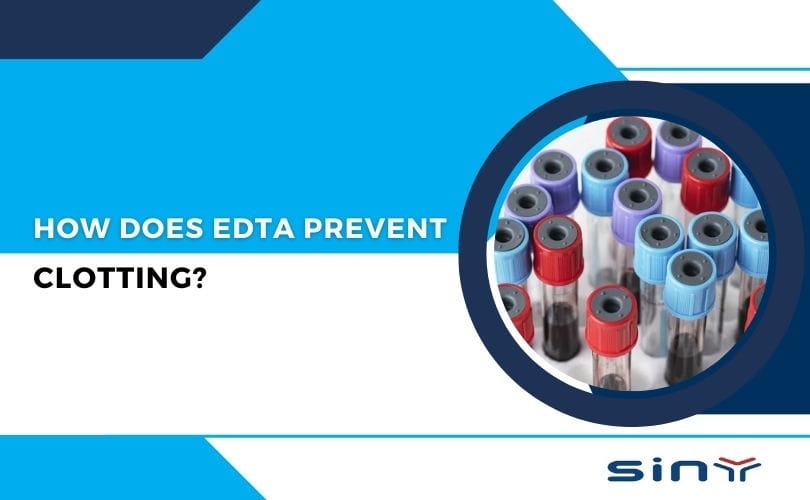Among all the tubes used in labs and blood banks, EDTA Purple Tubes stand out as one of the most essential tools for preserving blood integrity. Their purple or lavender cap has become a universal symbol for hematology testing, cell preservation, and safe blood component analysis. These tubes are widely available on EDTATube.com and are a fundamental part of blood collection systems across hospitals, diagnostic centers, and transfusion services.
Packed with EDTA anticoagulant, they prevent clotting by binding calcium—something that protects red cells, white cells, and platelets during testing. Whether it’s a routine CBC test, blood grouping, malaria screening, HbA1c, or crossmatch sample verification, these tubes keep the sample stable until analysis.
What Are EDTA Purple Tubes?
EDTA Purple Tubes, also known as lavender top tubes, are blood collection tubes containing Ethylene Diamine Tetraacetic Acid (EDTA). This compound works as an anticoagulant, meaning it blocks clotting so that whole blood remains in its natural, uncoagulated form.
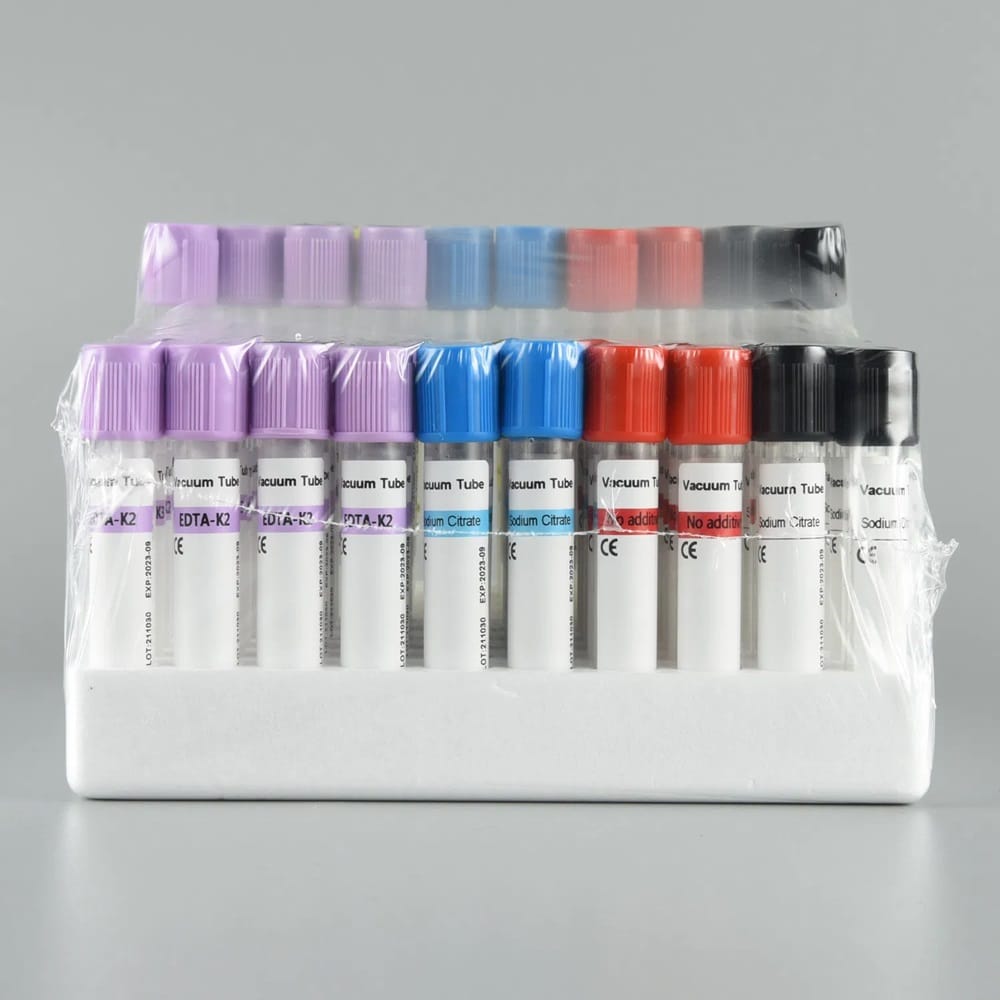
More details on the EDTA function can be found.
The purple tube is especially useful because EDTA preserves cell morphology, meaning red blood cells, platelets, and white cells stay close to their natural state during testing. That’s exactly why it’s used in hematology analyzers and blood banking verification procedures.
The manufacturing quality of EDTA tubes—such as those sold at EDTATube.com Products—also plays a major role in producing reliable results.
EDTA Tube Used for Which Test?
The purple cap tube is one of the most frequently used tubes in lab testing.
Here are the major tests performed using EDTA Purple Tubes:
1. Complete Blood Count (CBC)
This is the primary test, performed worldwide.
External reference: https://en.wikipedia.org/wiki/Complete_blood_count
2. Hemoglobin (Hb)
3. Hematocrit (HCT or PCV)
4. Total Leukocyte Count & Differential Count (DLC/TLC)
5. Platelet Count
EDTA protects platelets from clumping.
6. HbA1c Test
Used to monitor diabetes.
7. Malaria Parasite Testing (MP)
8. ESR (in some labs)
9. Blood Grouping Verification / Crossmatch Samples in Blood Banks
While the final crossmatch often uses red cells/serum, EDTA samples are used for cell preservation in preparatory steps.
You can see commercial examples of EDTA tubes for these tests at:
👉 https://www.edtatube.com/product-category/edta-tube/
What Is the Lavender Blood Tube Used For?
The lavender blood tube, often referred to as the EDTA Purple Tube, is primarily used for hematology tests. These include:
- Complete Blood Count (CBC): A routine test to evaluate overall health and detect disorders like anemia or infection.
- Blood Typing: Determining blood group and Rh factor.
- Hemoglobin Analysis: Measuring the oxygen-carrying capacity of blood.
- Reticulocyte Count: Assessing bone marrow function.
EDTA ensures that blood cells remain intact, providing accurate results for these tests. To learn more about the specific uses of EDTA tubes, check out our Purple Top Blood Collection Tube page.
EDTA Tube Contains – Composition Explained
Inside an EDTA purple tube, you’ll typically find:
1. EDTA (K2 or K3 formulation)
The quantity depends on tube size and intended use.
K2EDTA is usually spray-coated.
K3EDTA is typically in liquid form.
Both types create effective anticoagulation, but K3 may slightly dilute blood because it’s liquid-based. K2 is preferred for automated hematology systems.
2. A vacuum-controlled interior, allowing accurate blood draw volume.
3. Sterile tube walls, preventing contamination.
Product examples:
More detailed information about EDTA materials is available at:
👉 https://www.sinymedical.com/the-purple-edta-tube-in-the-blood-collection-tube/
What is an EDTA Purple Tube?
The purple tube, often referred to as the lavender blood tube, is a vacuum-sealed blood collection device distinguished by its color-coded stopper. This color code is a global standard established to prevent collection errors. The unique feature of this tube lies in its internal additive: EDTA, or Ethylenediaminetetraacetic acid.
The Chemistry of Coagulation: Why EDTA Tube Anticoagulant Works
The primary function of an anticoagulant is to prevent the collected blood sample from clotting, preserving the cellular components and plasma in a state as close as possible to when they were circulating within the body.
EDTA tube anticoagulant achieves this by a powerful and selective action: chelation.
Chelation Mechanism: EDTA is a polyaminocarboxylic acid that acts as a chelating agent. It binds tightly to metal ions, particularly calcium (Ca^{2+}).
The Coagulation Cascade: Calcium ions are an essential factor in the complex cascade of reactions that lead to blood clotting. Specifically, Ca^{2+} is needed for the activation of several clotting factors, including Prothrombin (Factor II) and Factor X, which are necessary steps for the conversion of soluble fibrinogen into insoluble fibrin.
Preventing Clot Formation: By binding and effectively removing the Ca^{2+}$ from the blood sample, EDTA halts the coagulation cascade immediately, thereby preventing the blood from clotting. This action preserves the blood cells (red cells, white cells, and platelets) in their native morphology, making the sample suitable for hematological analysis.
Types of EDTA Used: K2EDTA vs. K3EDTA
When sourcing products from manufacturers like Sinymedical or reviewing specifications for a purple top blood collection tube, you will encounter two main forms of EDTA:
| EDTA Type | Chemical Form | State | Concentration/Volume | Key Advantage |
| K2EDTA | Dipotassium EDTA | Liquid or Spray-dried Powder | Recommended by CLSI/NCCLS | Less dilution effect/preferred standard |
| K3EDTA | Tripotassium EDTA | Liquid Solution | Varies by tube volume | Highly soluble; faster mixing |
The K3 EDTA tube use is common, especially in liquid forms, as it dissolves rapidly and mixes efficiently with the blood. However, many laboratories and organizations, including the Clinical and Laboratory Standards Institute (CLSI), recommend the use of K_2EDTA because the addition of liquid K3EDTA can cause a slight dilution effect on the sample, which might slightly alter results for tests like the packed cell volume (hematocrit) at higher concentrations. Regardless of the form, the fundamental mechanism of calcium chelation remains the same. You can find both options among the products offered on our site.
Applications: EDTA Tube Used for Which Test?
The preservative action of the EDTA tube contains the perfect environment for preserving cell morphology, making it the primary tube of choice for tests where the analysis of whole blood or its cellular components is required.
The Complete Blood Count (CBC)
The single most frequent application for the purple tube blood test name is the Complete Blood Count (CBC). The CBC is a foundational test in medicine, providing a detailed snapshot of the patient’s hematological status.
A CBC measures several important parameters, as described in detail on Wikipedia’s entry for the Complete Blood Count, including:
Red Blood Cell (RBC) Count: The number of oxygen-carrying cells.
White Blood Cell (WBC) Count and Differential: The total number of immune cells and the breakdown of the five major types (Neutrophils, Lymphocytes, Monocytes, Eosinophils, and Basophils).
Hemoglobin (Hb): The protein responsible for oxygen transport.
Hematocrit (Hct) or Packed Cell Volume (PCV): The percentage of red blood cells in the total blood volume.
Platelet Count: The number of cells responsible for clotting initiation.
Red Cell Indices: Measurements like Mean Corpuscular Volume (MCV), Mean Corpuscular Hemoglobin (MCH), and Mean Corpuscular Hemoglobin Concentration (MCHC), which describe the size and hemoglobin content of the red cells.
Since EDTA preserves the size and shape of the blood cells for several hours, it is essential for accurate cell counting and morphological review under a microscope (a blood smear).
Blood Banking and Transfusion Medicine
The use of EDTA Purple Tubes in Blood Banking Procedures is perhaps their most defining role. Blood banking is the process of collecting, separating, testing, and storing blood components for transfusion. EDTA tubes are integral for several pre-transfusion tests:
ABO and Rh Typing (Blood Grouping)
This test determines a patient’s blood group (A, B, AB, or O) and their Rh status (positive or negative). This is the most essential test before a transfusion to ensure compatibility and prevent a severe hemolytic transfusion reaction. EDTA is preferred because it inhibits complement activation, which can interfere with certain manual or automated typing methods.
Antibody Screening and Identification
Antibody Screen: This test detects the presence of unexpected antibodies in the patient’s plasma that could react against transfused red blood cells. The plasma separated from blood collected in an EDTA tube is used.
Antibody Identification: If the screen is positive, this follow-up test identifies the specific nature of the antibody (e.g., anti-Kell, anti-Duffy).
Crossmatch Procedures
While the final “check” before transfusion often involves a tube containing an anticoagulant like EDTA or sometimes a gel tube, the blood collected in the purple tube provides the necessary sample for the major crossmatch. This procedure involves mixing the patient’s plasma with the donor’s red blood cells to confirm compatibility in vitro.
Other Specialized Hematology Tests
Beyond CBC and blood banking, the purple top tube used for other specialized hematology applications due to its reliable cell preservation:
Reticulocyte Counts: Measuring immature red blood cells to assess bone marrow activity.
Erythrocyte Sedimentation Rate (ESR): While historically done with citrate, EDTA tubes are sometimes used indirectly for this non-specific inflammation marker, though specific ESR tubes (often black tops) are more common.
Flow Cytometry: Essential for immunophenotyping cells in diagnosing conditions like leukemia and lymphoma. EDTA preserves cell surface markers.
Why the Color of the EDTA Tube Matters
The purple color of the EDTA tube is not just for identification; it signifies the presence of K2 or K3 EDTA, which are the most commonly used forms of this anticoagulant. The color-coding system ensures that healthcare professionals can quickly identify the correct tube for specific tests, reducing the risk of errors.
To understand the significance of the purple color in phlebotomy, explore our article on EDTA Purple Tube: Why the Color Matters in Phlebotomy.
How to Prevent Hemolysis in EDTA Purple Tubes
Hemolysis, the rupture of red blood cells, can compromise test results. To prevent hemolysis when using EDTA Purple Tubes:
- Proper Mixing: Gently invert the tube 8-10 times immediately after collection to ensure even distribution of the anticoagulant.
- Avoid Vigorous Shaking: Excessive force can damage blood cells.
- Correct Storage: Store samples at the recommended temperature to maintain sample integrity.
For more tips on preventing hemolysis, visit How to Prevent Hemolysis in EDTA Purple Tubes.
Purple Tube Blood Test Name – Common Lab Terminology
In routine laboratory language, the purple tube is often associated with several well-known test names:
CBC Test (Complete Blood Count)
PBF (Peripheral Blood Film)
Platelet Count Test
WBC Count Test
RBC Count Test
Hemoglobin Test
Hematology Analyzer Sample
Blood banks may refer to the sample as:
EDTA sample for grouping check
EDTA sample for cell preparation
You can see purple tube products here.
EDTA Purple Tubes in Blood Banking Procedures
Blood banking requires extreme accuracy. EDTA tubes are used in several steps because they preserve whole blood without altering cell structure.
ABO & Rh Verification Sample
Blood banks often use an EDTA sample to prepare red cells for grouping checks.
Antibody Screening Preparatory Samples
While antibody screening uses serum, EDTA tubes are used to prepare red cell suspensions.
Cell Preservation for Crossmatching
Sometimes EDTA samples are needed to verify donor and recipient cell characteristics.
Hemoglobin Testing for Donor Fitness
Before blood donation, a screening Hb test is often done using EDTA samples.
How EDTA Purple Tubes Help in Accurate Blood Bank Results
EDTA tubes offer several advantages:
Stable Cell Morphology:
Red and white blood cells stay close to their natural state.
No Clot Formation:
Perfect for preparing cell suspensions and smears.
High Consistency:
Automated hematology machines depend on EDTA-preserved samples.
Longer Sample Stability:
Most EDTA samples remain suitable for several hours without deterioration—although testing should be done promptly.
Preventing Hemolysis in EDTA Purple Tubes
Hemolysis ruins test results. To avoid it, blood banks follow guidelines that are explained here:
Key considerations include:
Correct mixing by gently inverting the tube 8–10 times
Avoiding forceful syringe transfer
Allowing the vacuum draw to occur naturally
Using the correct needle gauge
Ensuring tubes are not expired or damaged
Summary
EDTA Purple Tubes are a foundation of modern hematology and blood banking. They contain a reliable anticoagulant that preserves whole blood, prevents clot formation, and protects cell morphology for accurate testing. Whether it’s a routine CBC, a blood donation screening, or a sample used for grouping verification, these tubes deliver dependable results.
With the correct handling, gentle mixing, and use of high-quality tubes like those available at EDTATube.com, healthcare laboratories can maintain accuracy and consistency in their daily testing.
FAQs
1. What is the purple top tube used for?
The purple top tube is used for hematology tests, including CBC, blood typing, and hemoglobin analysis.
2. What does the EDTA tube contain?
The EDTA tube contains Ethylenediaminetetraacetic Acid (EDTA) as an anticoagulant.
3. Can EDTA tubes be used for serum tests?
No, EDTA tubes are designed for whole blood or plasma tests. Serum tests require tubes without anticoagulants.
4. How long can blood samples be stored in EDTA tubes?
Blood samples in EDTA tubes can be stored for up to 24 hours at room temperature or 48 hours if refrigerated.
5. Why is the EDTA tube purple?
The purple color indicates the presence of K2 or K3 EDTA, helping healthcare professionals identify the correct tube for specific tests.

